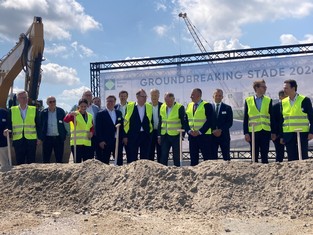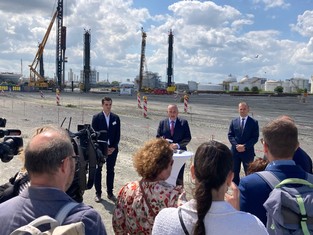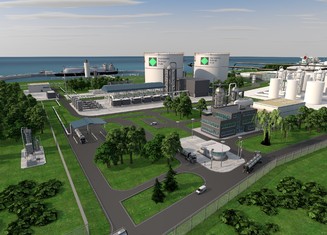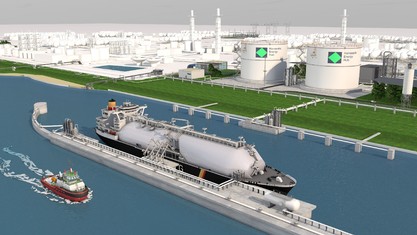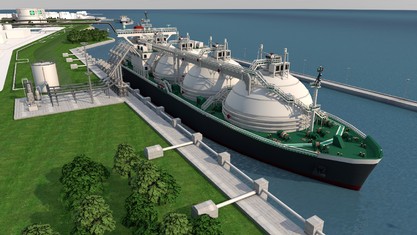“We have been working to secure the best possible energy future for the Czech Republic. That means that we are carrying on with measures to modernise the sector, such as by developing nuclear units or improving the investment environment for renewable sources, but also by taking measures to enhance our energy security, such as expanding TAL capacity, which will free us from our dependence on Russian oil. We have also been negotiating about gas supplies, to replace imports from Russia, and pursuing investments into storage tanks and pipelines,” says Minister of Industry and Trade Jozef Síkela, adding: “A fundamental component of all this is capacity for overseas import of liquified natural gas. Having secured capacity in the floating LNG terminal in the Netherlands, we also successfully secured capacity in Germany’s first onshore terminal at Stade last autumn, in cooperation with ČEZ. Three years from the launch of its construction today, it will be covering as much more than a quarter of the Czech Republic’s consumption. Its advantageous position can also help reduce gas transport fees for the Czech Republic.”
“The situation on the gas market in Europe has been stabilising, but we must be prepared for any further fluctuations. We are pleased to be able to attend the launch of the construction of the first onshore terminal in Germany, in Stade, thanks to the cooperation of the governments of the Czech Republic and Germany, and to the helpfulness of our partners from Hanseatic Energy Hub. A key element of our transition to an emission-free energy sector in the coming years will be a combination of renewable sources with gas power plants, which require the stable supply of fuel that LNG terminals are able to provide. Thanks to capacity at Stade, the Czech Republic will have secured long-term LNG supply, and later, after the terminal’s conversion, it will also have the opportunity to obtain emission-free gas,” said Vice-Chairman of the Board of Directors of ČEZ Pavel Cyrani.
The future Stade onshore terminal is located along the Elbe, in the federal land of Lower Saxony, approximately half-way between Hamburg and the river’s mouth on the North Sea. In addition to its strategic position, an advantage of the terminal is that it can be accessed by the largest LNG tankers, which are 345 metres long, and it will also feature large gas storage tanks. After its completion, the total annual capacity will be 13.3 billion cubic metres of gas, of which 1.3 billion will be used for short-term spot contracts. Approximately 90% of the terminal’s capacity has been booked by large European energy companies: including, aside from ČEZ, the German players EnBW and SEFE. During the first phase, the terminal will be used for the import and processing of LNG, synthetic natural gas (SNG), and biomethane, to be followed by the processing of carbon-neutral ammonia as the transport medium for green hydrogen. The shareholders of Hanseatic Energy Hub include Buss Group, Partners Group, Enagás, and Dow.
“After six years of planning and permitting, the construction phase now begins. We are proud that Germany’s first land-based terminal is taking shape in Stade – this being not only a major German but also a major European project. Privately initiated and funded we are benefiting from the vast experience of our shareholders. Partners Group is one of the largest private investors in the infrastructure sector. And Enagás, Europe’s leading LNG-terminal operator, will be assuming operational responsibility and is teaming up with Dow, the ideal industrial partner on the site in Stade. As an initiator, the Buss Group has played a key role in driving the project forward and bringing the shareholder-team together,” says Jan Themlitz, Chairman of the Board of Directors of Hanseatic Energy Hub.
The Czech Republic has leased capacity at the Stade terminal for 15 years, with an option to extend to 25 in connection with the use of green hydrogen. The Ministry of Industry and Trade has supported the transaction by entering into a security agreement with ČEZ, as was the case with the Eemshaven terminal. At the Stade terminal, ČEZ will secure an annual capacity of 2 billion cubic metres of gas for the Czech Republic, which accounts for more than a quarter of the country’s consumption last year. Gas consumption has been declining steadily in recent years: whereas in 2021, Czechs used 9.4 billion cubic metres, it was down to 7.5 billion a year later, and last year to a mere 6.7 billion cubic metres. This means that, year on year, an additional 800 million cubic metres were saved, which is more than 10 percent. Natural gas will, however, continue to play a significant role in the transformation of the Czech energy sector, helping to replace coal in the heating sector and, in terms of electricity, it will be a major element in maintaining network stability using combined cycle power plants.
